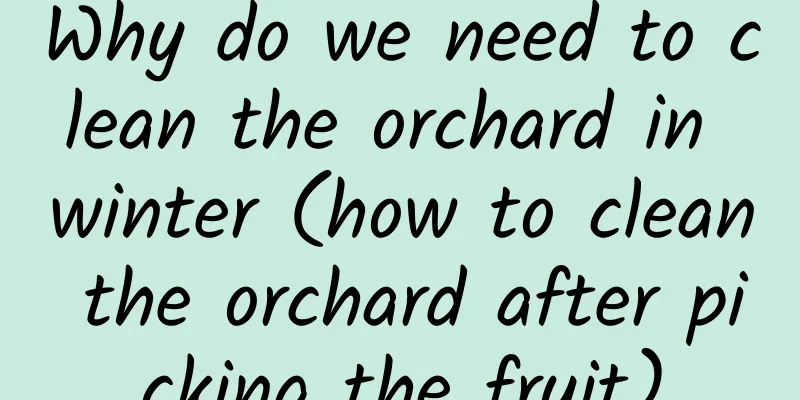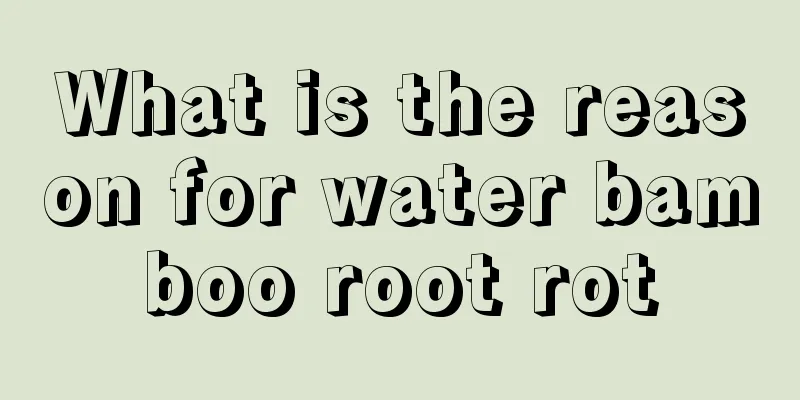Why do we need to clean the orchard in winter (how to clean the orchard after picking the fruit)

1. Park cleaning timeThe time for cleaning fruit trees is usually in late autumn, early winter or early spring. Among them, it is best to clean the orchard one or two weeks after fruit picking, because after picking the fruit trees during this period, there are many broken branches and scars on the tree trunk. If they are exposed to water for a long time, they are very likely to be infected and diseased, so timely treatment is the best. Secondly, the pests during this period are still on the surface and have not yet had time to hide, so they are easier to control. Thirdly, cleaning the garden after the fruit is also more conducive to the storage of nutrients. 2. Order of Cleaning the GardenUsually, garden cleaning also requires a certain order. Only when the order is correct can it achieve the effect of killing one and destroying a thousand, and achieving twice the result with half the effort. Generally speaking, the order of cleaning the garden is: branches, tree trunks, ground surface, and underground. Branch cleaning usually involves pruning; trunk cleaning involves removing diseased spots and scraping off old bark; surface cleaning mainly involves removing dead branches, leaves and weeds; underground cleaning involves drying the soil and eliminating pupae and insects. 3. Garden cleaning methods1. PruningThe cleaning of branches lies in pruning. First, cut off the broken branches that break the fruit and cause damage; then cut off the weak and dry branches; and finally cut off the dense branches and the overlapping branches. Finally, cut off the overlong branches that affect the tree shape. It is worth noting that after pruning, don't forget to disinfect and sterilize the affected area to avoid infection . 2. Scrape the skinAs the annual rings of many adult fruit trees increase, the bark gradually ages, causing cracks and peeling. The cracks and under the bark become habitats for bacteria and pests. For example, dry rot, ring rot, red spiders, scale insects, leaf rollers, etc. take root and breed here. Therefore, scraping off the diseased skin and old peeling skin has become an important part of garden cleaning work. When scraping the skin, the diseased skin should be scraped until there is no trace of the disease, so as to completely remove the disease. For old and warped skin, the deeper the crack, the deeper the scraping; the shallower the crack, the shallower the scraping. 3. WhitewashAfter the trunks and main branches have been despotted and scraped, they should be whitewashed to prevent wound infection, promote wound healing and prevent frost damage. Whitewash can be prepared by yourself using lime, lime sulfur, salt, clay and water in a certain proportion, or you can purchase ready-made paint. 4. IncinerationAfter the branches and trunks of the trees have been pruned, bark scraped and whitewashed, the cut dead branches and leaves, scraped diseased bark, old bark, together with the dead grass and fallen leaves in the garden, should be burned together to eliminate the root of the disease. 5. SprayingAfter pruning, bark scraping, whitewashing and burning, the work of cleaning the orchard is half done . Next, it is necessary to prevent diseases and insects on the surface soil and further disinfect and kill insects on the tree trunks. Because after autumn, many adult insects will lay eggs on tree trunks or branches, which will then fall to the ground and hibernate in the soil. Therefore, after the pruned branches and leaves, orchard weeds and fallen leaves are burned and cleared, the surface soil should be sprayed with pesticides immediately before the pests lurk. At the same time, the tree trunk should also be further disinfected and insecticidal. 6. Turn the soilAfter the fruits are picked and cleaned, people will also deep-plow the soil and dry it in the sun to destroy the pest holes, leaving them bare and dying of drought or freezing. This is also the last and important step of the garden cleaning work after spraying the pesticides. |
Recommend
How to trim ginkgo bonsai to look good
When is the right time to prune ginkgo bonsai? Gi...
What plants are suitable for superphosphate and how to use it best
1. Suitable plants Superphosphate is widely used ...
What to do if bougainvillea drops flowers and leaves
Why does bougainvillea drop its flowers? Human fa...
How to prune and shape asparagus fern
1. Basin size control If you want to control the ...
What are the cultivation methods and precautions for hydroponic white palm?
White Anthurium Introduction White calla lily usu...
How to water geraniums
1. How often do you need to water? Geranium has f...
Is cloud bamboo easy to grow? Can it be grown indoors?
Is it easy to grow cloud bamboo? Cloud bamboo is ...
How to plant stem apricot seeds
1. Sowing time The ideal temperature is 15 to 30 ...
Can I plant an osmanthus tree in front of my door?
Can I plant an osmanthus tree in front of my door...
When is the best time to plant chives?
Leek planting time Leek is suitable for planting ...
Clivia rose...throw it into water and it grows wildly!
Clivia 1. The Clivia is not growing well and its ...
The efficacy and function of Buddaria
Common Benefits of Buddleija Buddleija is pungent...
Can orchids be grown in nutrient soil?
Can orchids be grown in nutrient soil? Orchids ca...
What crops are suitable for planting in summer? What crops are suitable for planting in summer?
The temperature in summer is relatively high, so ...
What are the functions of pear trees
The ornamental value of pear trees "Suddenly...









